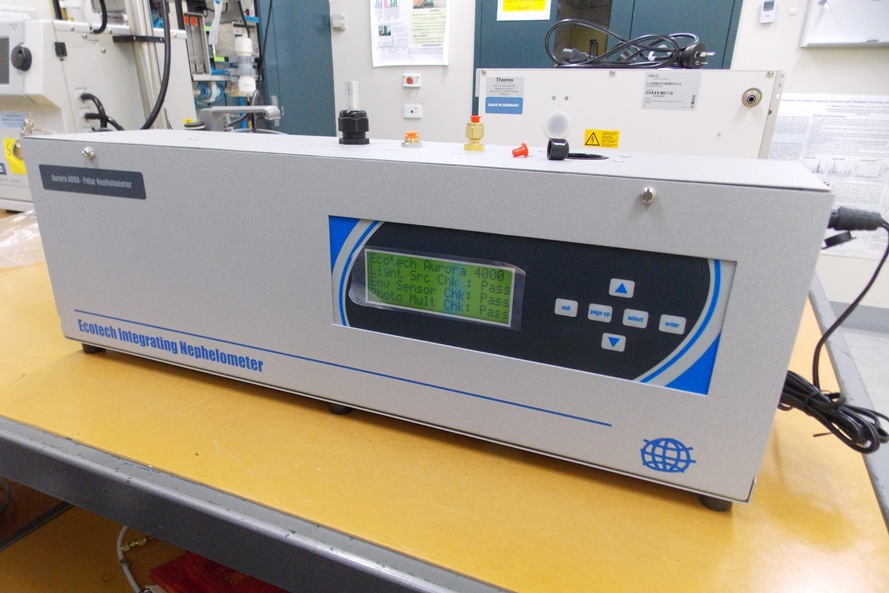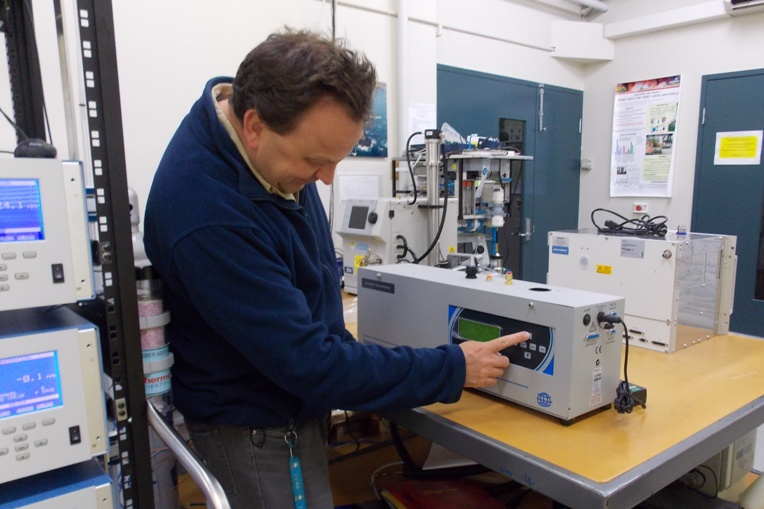One of the new and exciting capabilities for Australia’s Marine National Facility is in the scientific discipline of atmospheric research.
There are two dedicated atmospheric laboratories onboard RV Investigator, and a suite of instrumentation that will passively, continuously, collect data wherever the vessel goes.
Part of this suite of instruments is the nephelometer.
The what?
It’s a tricky name, nephelometer, which comes from the Greek word for cloud, nephos.
 It uses light beams to tell us about the particles in the atmosphere – it can tell us how clean the air is.
It uses light beams to tell us about the particles in the atmosphere – it can tell us how clean the air is.
Did you know that light coming from the sun can actually be deflected by the particles suspended in our atmosphere? That’s why when it’s a hazy day you can’t see very far.
The nephelometer can tell us how much light from the sun is making it through the atmosphere and how much is being reflected back into space!
The nephelometer that will be used onboard RV Investigator has been delivered to Jason Ward (below), from the Atmosphere and Land Observation and Assessment section of CSIRO Marine and Atmospheric Research.


